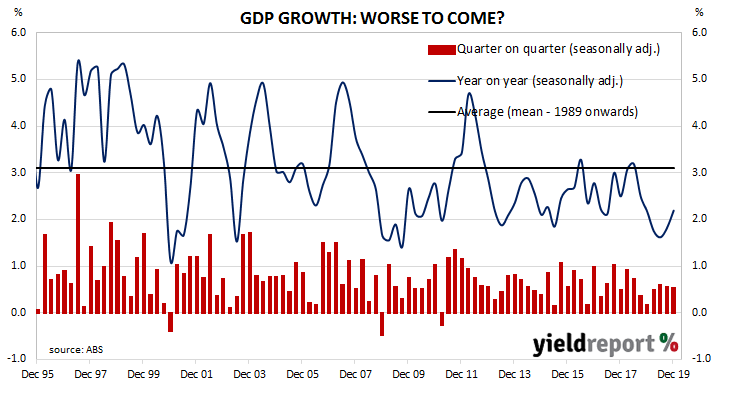Since the “recession we had to have” as the recession of 1990/91 became known, Australia’s GDP growth has been consistently positive, with only the odd negative quarter here and there. Australia even managed to avoid two consecutive quarters of negative growth in the GFC period. However, rates of growth in recent quarters have fallen below 2% and the RBA has recently cut its cash rate target to the lowest rate in Australian history. Now economists expect Australia’s growth rate to fall as the economic effects of COVID-19 take hold.
Figures released by the ABS indicate December quarter GDP grew by 0.5%, more than the 0.4% increase which had been expected but less than the September quarter’s +0.6%. On an annual basis, GDP increased by 2.2%, up from the September quarter’s comparable figure of 1.8% after it was revised up from 1.6%.
Westpac senior economist Andrew Hanlan said, “In short, the economy continued to lack momentum heading into 2020, with policy stimulus [such as] interest rate cuts and modest tax rebates having a limited impact to date. This was ahead of the outbreak of the coronavirus which is significantly disrupting activity in the March quarter.” Commonwealth bond yields fell noticeably but not nearly as much as US Treasury yields had in overnight trading after the US Fed cut the federal funds rate by 50bps in an emergency meeting of the FOMC. By the end of the day, 3-year Treasury bond yields had fallen by 6bps to 0.39%, the 10-year yield had shed 7bps to 0.72% while the 20-year yield finished just 2bps lower at 1.19%.
Commonwealth bond yields fell noticeably but not nearly as much as US Treasury yields had in overnight trading after the US Fed cut the federal funds rate by 50bps in an emergency meeting of the FOMC. By the end of the day, 3-year Treasury bond yields had fallen by 6bps to 0.39%, the 10-year yield had shed 7bps to 0.72% while the 20-year yield finished just 2bps lower at 1.19%.

